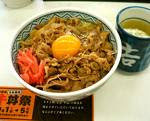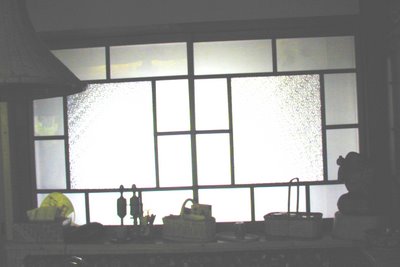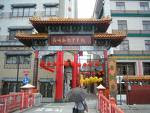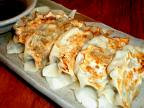::::::::::::::::::::::::::::::::::::::::::::::::::::::::::::::::::::::::::::::::::::::::::::::::::::
Ecotarian Food エコタリアン and Slow Food
***** Location: Japan
***** Season: Topic
***** Category: Humanity
*****************************
Explanation
Ecotarian is a term that refers to the process of selecting food with consideration for all of the various ecological factors plus energy used to produce the food. The goal is to eat in a sustainable way. Sustainability itself is a tricky concept, as there is no end goal to focus on, but rather it is an aim to reduce our environmental impact, our ecological footprint.
"Ecotarian" means a diet that is based on "eating your environment," just as "vegetarian" refers to "eating vegetables."
Ecotarian embraces the idea of reducing the distance between where food is produced, and where food is consumed (food miles). There are several key aspects for "eating local".
Origin
The term ecotarian has been developed and used independently by different groups and individuals across Britain and the rest of the world and there is yet no agreed origin. Some people use it synonymously with ethicatarian and locavores.
© More in the WIKIPEDIA !
:::::::::::::::::::::::::::::::::::::::::::::::::::::::::::::::::::::::::::::::::::::::::::::::::::
Global warming 地球温暖化
:::::::::::::::::::::::::::::::::::::::::::::::::::::::::::::::::::::::::::::::::::::::::::::::::::
Just Enough:
Lessons in Living Green from Traditional Japan
Azby Brown
quote
He said people in the Edo Period overcame many of the same problems confronting present-day society — issues of energy, water, materials, food and population — in unique ways.
For example, trading in human waste was big business, with farmers going to great lengths to secure contracts to collect and transport night soil from cities for use in their fields, at a time when in Europe such waste was being dumped in rivers, polluting the water supply and leading to outbreaks of cholera, Brown said.
He cited "oshinko" pickles as examples of food that can be preserved and eaten without the need for cooking, thereby saving fuel.
"We can probably save a lot of energy if we eat more foods that don't require cooking," he said.
by Yoichi Kosukegawa
source : Japan Times, Feb. 17, 2010
. WASHOKU
Pickles (tsukemono 漬物)oshinko おしんこ【御新香】
::::::::::::::::::::::::::::::::::::::::::::::::::::::::::::::::::::::::::::::::::::::::::::::::::::
Slow Food from Japan

click for more English Information
quote from July, 2008
The Ark of Taste in Japan
aji no hakobune 味の箱舟
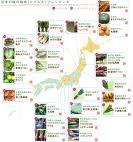
The Ark of Taste is a project created by the Slow Food Association in 1996. It is a metaphorical vessel traveling around the world, helping small-scale products of high gastronomic value threatened by industrial agriculture, environmental degradation and standardization.
The Ark seeks out, catalogs and nominates flavors that are endangered and need protection, but are still alive and have real potential. With the help of monitoring carried out by Slow Food Convivia around the world, the Scientific Ark Commission evaluates cured meats, cheeses, cereals, vegetables and local breeds using specific selection criteria: gastronomic excellence, a connection with the local area, artisan production, a sustainable approach by producers, and products at risk of extinction.
Japan is a country where the Ark project has been welcomed with particular enthusiasm. The Japanese Ark was formed in 2005, when the commission selected the first nine products: the tankaku cattle breed, etari in brine (anchovies macerated and fermented in brine using traditional artisan methods), the roasted and smoked goby yakihaze from Nagatsura Bay, two local types of turnip (hanazukuri daikon and akkajidaikon), yukina (a leaf vegetable grown in the area of Yonezawa), Amarume Welsh onion, hachiretsu corn and Unzen kobu takana (an ecotype of takana, distinctive for the ‘knots’ on its leaves).
There are now 20 Ark products and over time the project has strengthened the links between Japanese Ark producers and the Slow Food network, which is actively involved in presenting and promoting them.
source : www.slowfood.com/
短角牛 Tankaku beef たんかく牛 Iwate
etari えたりの塩辛 from Nagasaki
えたり(かたくちいわし)
yakihaze 焼はぜ / 焼きハゼ from Nagatsura
yuukoo ゆうこう citrus fruit from Nagasaki
花作(はなづくり)大根」Hanazukuri Daikon
Kisoo akakabu 木曾赤かぶ red turnips from Kiso
Kosena daikon 小瀬菜大根 radish from Miyagi
あっかじだいこん akkajidaikon akkaji daikon
amarume 余目 (あまるめ) twisted leek from Miyagi
..... Sendai magari negi 仙台曲 twisted leek from Sendai
Noguchi sai 野口菜 leafy vegetables from Noguchi, Nikko
akanegi 赤ネギ red onions from Ibaragi
Yatabe negi 谷田部ねぎ onions from Yatabe, Fukui
yukina ゆきな / 雪菜 "snow leaves"
Maibara yukina
八列とうもろこし (はちれつ) hachiretsu corn
雲仙こぶ高菜 Unzen kobu takana
takana 高菜 takana leaves
Brassica juncea var. integlifolia
.................................................................................
Resistance in Japan
Article from October 2010
Modernity has wreaked havoc on the ancient identity of the Japanese people. This was already understood by the Japanese intellectuals who gathered in Kyoto in 1942 to draw up a strategy to stop the phenomenon of Westernization. They believed that the glorious Japanese traditions were at serious risk, and with them national identity (for more on this see Occidentalism by Ian Buruma and Avishai Margalit).
Slow Food can play a very important role in this country, and in fact it is surprising that the movement has not yet developed here as much as it could. In no other place is there such great harmony with the philosophy of those locals who believe in the survival of traditions and are fighting for recognition of their value, without giving in to the abusive power of the food industry.
Visiting the Unzen Takana Vegetable Presidium in the prefecture of Nagasaki, followed by a meeting of the local Slow Food convivium, was extremely encouraging and showed us just how aware people here are of the issue of food biodiversity.
The recently formed Slow Food Nagasaki Convivium has already firmly oriented itself towards promoting this specificity. It is not by chance that the first and only Japanese Presidium, for the Unzen Takana Vegetable, was established here.
More is here
source : Piero Sardo / www.slowfood.com
:::::::::::::::::::::::::::::::::::::::::::::::::::::::::::::::::::::::::::::::::::::::::::::::::::::
quote from Japan Times, Feb. 2008
Slow-food movement creeps to Japan
By YOKO HANI
Enjoying good food is a fundamental pleasure. But the slow-food movement asks whether "good food" can mean more than simply the flavor and presentation of a meal.
"When we talk about quality food, we mean something that is good to taste but also good in terms of its background,' " said Giacomo Mojoli, former vice president of Slow Food International, an NPO founded in 1989 in Italy, and the current spokesman for Slow Food Italy. Mojoli was in Tokyo recently to attend a symposium titled "Food Culture in the Global Age" organized by another NPO, the Tokyo Foundation.
"Slow food has been interpreted as being about 'eco-gastronomy,' in which we appreciate not only food itself but also things 'outside the plate,' such as the method of farming, the producers and the food's history," Mojoli said.
MORE
source : Japan Times
:::::::::::::::::::::::::::::::::::::::::::::::::::::::::::::::::::::::::::::::::::::::::::::::::::::
Slow Food Japan
Slow Food Japan was founded in June 2004, the sixth national branch of Slow Food to be established. The national headquarters are situated at the Tohoku Fukushi University in the city of Sendai. There are over 1,800 members and 40 convivia in Japan. Important Japanese producers now participate in international events such as Salone del Gusto, Slow Fish and Cheese.
The first national event was held in December 2005 in Tokyo to launch the Ark project in Japan and was followed by the Yokohama Fair in April 2006, which showcased presidia products from around the world.
Office: Slow Food Japan
Tohoku Fukushi University Station Campus 1F
1-19-1 Kunimi, Aoba-ku, Sendai
981-8523

スローフードジャパン (SlowFoodJapan)
http://www.slowfoodjapan.net/
スローフードジャパン事務局
〒981-8523 宮城県仙台市青葉区
国見1丁目19-1 東北福祉大学
Slow Food International
http://www.slowfoodjapan.net/sibu/
Slow Fod Nara
http://slowfoodnara.com/
Slow Food Okinawa
http://www.slow-food.jp/
Slow Food Suginami / Tokyo
http://www.slowfood-suginami.com/forum/foods/2010/05/538/
Slow Food Yamagata
http://www.slowfood-suginami.com/forum/foods/2010/05/538/
Bewegungen wie Slow Food und Eco-Food breiten sich langsam aus, das verstärkte Umweltbewußtsein beziet sich auch wieder auf Lebensmittel und Lebensmittelsicherheit, nachdem zahlreiche Skandale in der Lebensmittelbranche die Bürger aufgeschreckt haben.

Meeting in Nara in 2010
::::::::::::::::::::::::::::::::::::::::::::::::::::::::::::::::::::::::::::::::::::::::::::::::::::
quote
I am a Canadian who is living in the countryside of north-eastern Japan.
Nigel Fogden Shibata
Slow Food from Japan
http://slowfoodfromjapan.blogspot.com/
*****************************
Worldwide use
*****************************
Things found on the way
Slow food
More about : スローフード !
Slow-Food-Bewegung
"Ohne Gentechnik"
ohne gentechnische Zusätze
source : Slow Food Deutschland
Terra Madre 2008, ein Treffen von Köchen aus aller Welt
Münchener Messe "Food&Life"
Slow Food Deutschland e.V.
http://www.slowfood.de/projekte_und_aktionen/
:::::::::::::::::::::::::::::::::::::::::::::::::::::::::::::::::::::::::::::::::::::::::::::::::::::
Agroforestry
especially in the Amazon, to grow various trees of different hight
. . . Reference
*****************************
HAIKU
slow life
slow food
slow haiku

葉っぱは自然に散る
人間は自然に生きる
......... そして死ぬ
Gabi Greve 2005
【do LOHAS】ロハスを
*****************************
Related words
***** . Cheap local food
B-kyuu gurume B級グルメ Second Class Gourmet
***** スローライフ ネットワーク岡山
Slow Life Network Okayama
***** . Takana 高菜 mustard greens .
***** WASHOKU : General Information
:::::::::::::::::::::::::::::::::::::::::::::::::::::::::::::::::::::::::::::::::::::::::::::::::::

